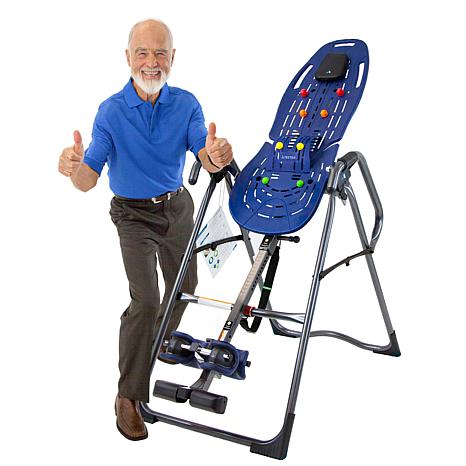

Copyright 2012 - 2020


CONNECT WITH US ON:






| Get our FREE E-Newsletter |



We are proud members of our 2 local Chamber's of Commerce, and we have been a member of the BBB since 1995!
Centre Wellington Chamber of Commerce
Teeter Manual Table Models:
FitSpine LX9 | FT1 | EP-970 Ltd. | EP-550 | EP-550 Sport | EP-560 | EP-560 Sport | EP-860 | EP-950 | EP-960 | Contour L5 Ltd.
Resources:
Before you buy | History of Teeter Hang Ups | Teeter's Commitment to Quality | Message from Roger Teeter | Teeter's Success Stories | Teeter TV | Comparing the Competition | FAQ's | History of Inversion | Benefits of Inversion | Medical Studies | Back Pain | Sciatic Overview | About your back | Our Client Testimonials | Our Store Directory | Store Photos
Trust Teeter for a
Better Back, Better Body!
Teeter Portable Decompression Devices:
Ez-Up Inversion System | Ez-Up Rack | Ez-Up Gravity Boots | P3 Back Stretcher (Lynx)
Published Medical Studies Show Promise in the Field of Inversion
Researchers have noted:
- Inversion reduces the need for sciatica back surgery
- Patients who were unable to work due to back pain could return to work after using inversion
- Inverted traction is more effective than mechanical traction machines found in doctor's offices
- Inversion increases spinal length
- Inversion reduces EMG activity (an indicator of muscle pain)
- Inverted traction decompresses the lumbar area
- Rhythmic traction can lower blood pressure
- Inversion reduces disc pressure
Important Medical Studies Relating to How Inversion Could Benefit You
- Inversion Therapy in Patients with Pure Single Level Discogenic Disease: a pilot randomized trial. Manjunath Prasad KS, Gregson BA, Hargreaves G, Byrnes T, Mendelow AD. Regional Neurosciences Centre, Newcastle General Hospital, Newcastle Upon Tyne, UK. Patients who were told they needed sciatic operations were divided into two groups. One group regularly practiced inversion therapy along with regular physiotherapy, while the other practiced physiotherapy alone. Authors stated, "Inversion therapy decreased the need for an operation in sciatica due to single level disc protrusion to 23% as compared to 78% in the non-inversion group."

- The results showed that patients who practiced inversion were 70.5% less likely to require surgery.
-
Sheffield, F.: Adaptation of Tilt Table for Lumbar Traction. Arch Phys Med Rehabilitation; 45: 469-472, 1964. 175 patients who were unable to work due to back pain were treated. After eight inversion treatments, 155 patients were able to return to their jobs full time. Study concluded that the main basis for improvement was the stretching of paraspinal vertebral muscles and ligaments and possibly the widening of intravertebral discs.
Study found significant improvements in a variety of diagnosis including spondylolisthesis, herniated discs, lumbar osteoarthritis with sciatica, and coccygodynia. Patient experienced traction in a modified hip flexed position.
It is worth noting that previous to his use of inversion therapy, Dr. Sheffield regularly used mechanical traction with weights and pulleys. He considered inverted traction much more effective than mechanical traction.
- Nosse, L.: Inverted Spinal Traction. Arch Phys Med Rehabilitation; 59: 367-370, Aug 78.
Study found EMG activity (an indicator of muscle pain) declined 35% within the first 10 seconds of inversion. Study found that inversion increases the spinal length. Study concluded there is a correlation between a reduction in EMG activity and an increase in spinal length.
- Gianakopoulos, G, et al: Inversion Devices: Their Role in Producing Lumbar Distraction. Arch Phys Med Rehabilitation; 66: 100-102, Feb 85.
Study found all subjects experienced intravertebral separation in the lower lumbar vertebrae. Study concluded that although mechanical traction has been used for centuries, only gravity-assisted traction (inversion) offers an effective means of achieving pelvic traction at home.
- Ballantyne, Byron, et al: The Effects of Inversion Traction on Spinal Column Configuration, Heart Rate, Blood Pressure, and Perceived Discomfort. Jour. of Orthopedic Sports Phys. Ther. 254-260, Mar 86.
Study concluded that inversion can be an effective means of spinal traction. Subjects inverting in the hip flexed position experienced greater separation between the lumbar vertebrae.
- Kane, M, et al: Effects of Gravity-facilitated Traction on Intravertebral Dimensions of the Lumbar Spine. Jour of Orthopedic and Sports Phys Ther. 281-288, Mar 85.
Study found gravity-facilitated traction (inversion), produces significant intravertebral separation in lumbar spine. Study concluded gravity facilitated traction may be an effective modality in the relief of low back pain.
- Goldman, R, et al: The Effects of Oscillating Inversion on Systemic Blood Pressure, Pulse, Intraocular Pressure, and Central Retinal Arterial Pressure. The Physician and Sports Medicine. 13: 93-96, Mar 85.
Study concluded that full inversion using oscillation procedure presents no risk to normotensive healthy subjects.
- Dimberg, L, et al: Effects of gravity-facilitated traction of the lumbar spine in persons with chronic low back pain at the workplace.
116 people were enrolled in the randomized controlled trial which lasted for 12 months. A randomized controlled trial with two training groups and one control group was conducted to asses the effect of gravity inversion on pain level and absenteeism due to LBP.
Average age = 44 years. 77% men
Group 1: used inversion for 10 minutes 1/day
Group 2: used inversion for 10 minutes 2/day
Group 3: control group
Results after 12 months of training program 1: The employees in Group 1 and 2 decreased sick days due to back pain by 33%. Program 2: Average sick days to due back pain fell by 8 days per individual in the treated group. Program 3: "Inversion is an efficient and cheap way to improve employee health and possibly reduce sick day costs to the employer."
- Nachemson, Alf, et al: Intravital Dynamic Pressure Measurements in Lumbar Discs. 1970.
Study measured internal disc pressure (in the 3rd lumbar disc) through a range of activities, including standing, sitting, bending and vertical and supine traction. The study suggests that a traction load of 60% body weight is sufficient to reduce the residual pressure of 25% standing body weight to zero.





